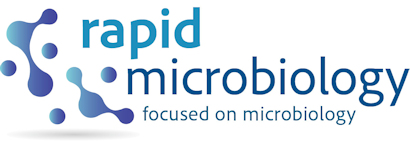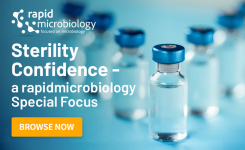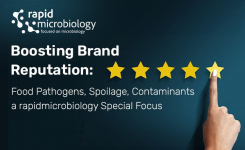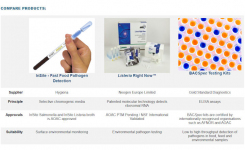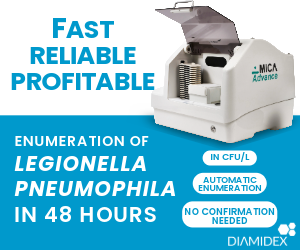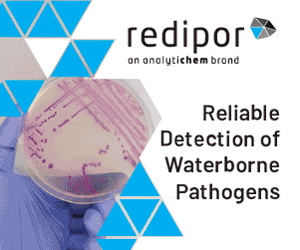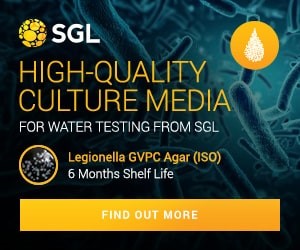
E.coli foodborne infections constitute a substantial burden of disease for the global population. In the US alone, it is estimated that at least 2000 citizens are hospitalised annually with 60 deaths with E.coli as a causative agent and its subsequent effects (CDC). E. coli 0103, an STEC serotype has been implicated in a minor number of infectious outbreaks over the years, most recently almost two hundred were sickened in a multi-state outbreak, the largest in almost a decade which resulted in 29 hospitalisations and food recalls on over 150,000 pounds of raw ground beef products.
Historically, during spring of 2006 an E. coli O103 outbreak was unleashed in Norway, among the 17 cases identified, 10 children developed Hemolytic Uremic Syndrome (HUS) and there was one fatality. After several rounds of investigation by the Norwegian School of Veterinary Science involving meat products of beef and sheep origin, a cured sheep sausage product from a single brand was identified as the source of the outbreak. While STEC was not identified, a small proportion of the flocks tested positively for enteropathogenic E. coli (H types 2 and 25).
In 2004 we saw the first description of a shiga toxin-producing E. coli O103 H2 in Brazil isolated from sheep with re-emergence in 2005 and between 1997-2000 STEC E. coli O103 H2/H(-) was found to be among the third most frequently isolated EHEC serotype in Germany. Additionally, between 2010-2013 sporadic outbreaks of the pathogen have occurred in Japan in nursery facilities with an unknown source. More recently in 2017 an E. coli O103 outbreak erupted in Germany following a school-led trip to Austria. The implicated product was raw cow’s milk and the case highlighted the essential role of international collaboration in effective outbreak investigations and responses.
Here, rapidmicrobiology speaks to Professor Keith Warriner, food safety expert and Professor of Microbiology at the University of Guelph to help understand some of the factors that shape the effectiveness of outbreak responses to E. coli O103:
Q1. What are the types of foods at particular risk of E. coli O103 infection?
There are a variety of foods that are vulnerable to E. coli O103 infection including beef, other meats and fresh produce. Transmission can also occur from person to person.
Q2. What are some of the technical challenges in the identification of E. coli O103 in the lab?
Firstly, not all O103 serotypes are virulent. Secondly E. coli O103 induces viable but non-culturable dormancy more so than other shiga-toxin producing E.coli. Thirdly E.coli O103 unlike other pathogenic foodborne microorganisms is not routinely screened for in outbreaks therefore is more likely to be missed.
Q3. How do these factors shape the effectiveness of responses to outbreaks?
Effectiveness is hindered due to the challenge of differentiating virulent from non-virulent strains. It can also be particularly challenging to culture.
Q4. What does the future hold for the identification of E. coli O103 in the lab?
We should move to focusing on virulence capacity as opposed to designating serotypes, this has been the issue in general with non-O157 STEC so the benefits will be manifold as we see these types of strains implicated in outbreaks.
Q5. How is the work of your team shaping detection and outbreak responses?
We have performed extensive surveys of STEC with beef processing and found that O103 has a high prevalence building a case for routine screening. Our current research investigates the persisted state in O103 including understanding the mechanisms for how it is induced and how it can be broken to enable the bacteria to become culturable. These insights should enable us to be able to overcome the technical challenges involved in lab culturing a current barrier to regular screening and rapid outbreak response.
Keith Warriner is a Professor of Microbiology at the University of Guelph, Ontario and the Department of Food Science Graduate Coordinator for MSc and PhD Food Science programs. A former chef who then went onto study Food Science, he began his work at the University of Guelph in 2002, after the completion of his PhD in microbial physiology and several years of academic research in the UK. He is a member of the International Association of Food Protection and on the editorial board for the International Journal of Food Microbiology. His current research projects include investigating how pathogens produced in the laboratory relate to those outside of it and the microbial safety of fresh produce from farm to fork.
Reference Links and Further Reading:
https://www.rapidmicrobiology.com/news/almost-200-affected-in-multi-state-e-coli-o103-outbreak
https://bmcinfectdis.biomedcentral.com/articles/10.1186/1471-2334-8-41
https://www.ncbi.nlm.nih.gov/pmc/articles/PMC4654900/
https://www.ncbi.nlm.nih.gov/pubmed/18032850
https://www.ncbi.nlm.nih.gov/pubmed/24423724
https://www.ncbi.nlm.nih.gov/pubmed/12798005


